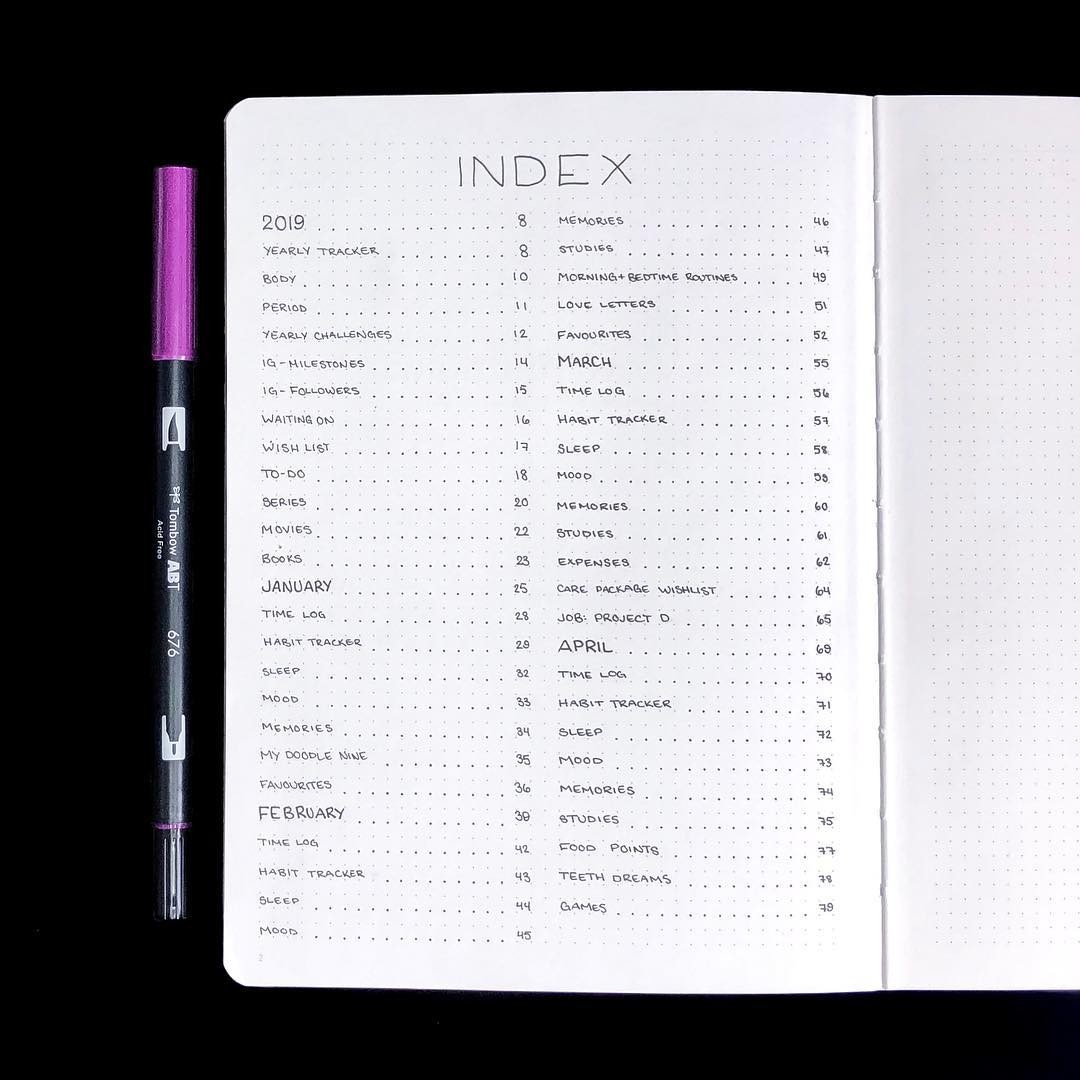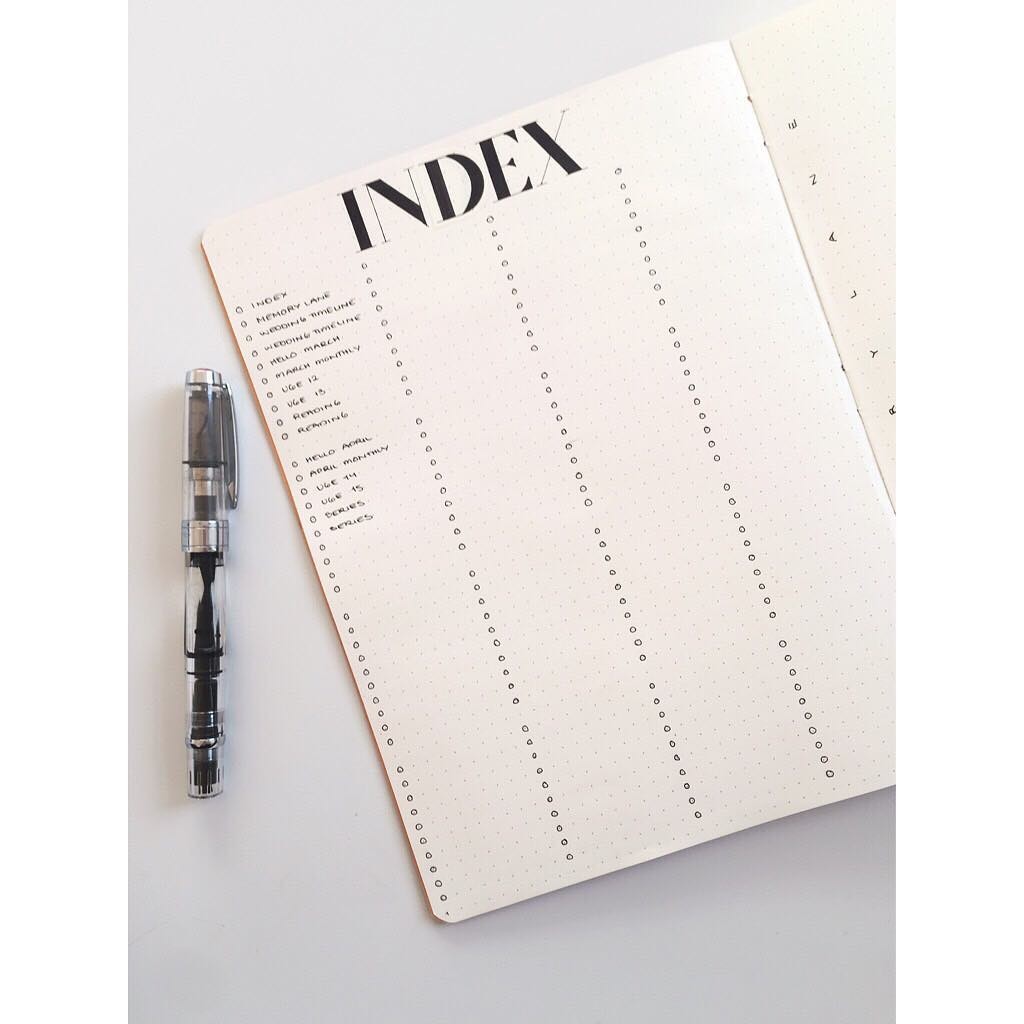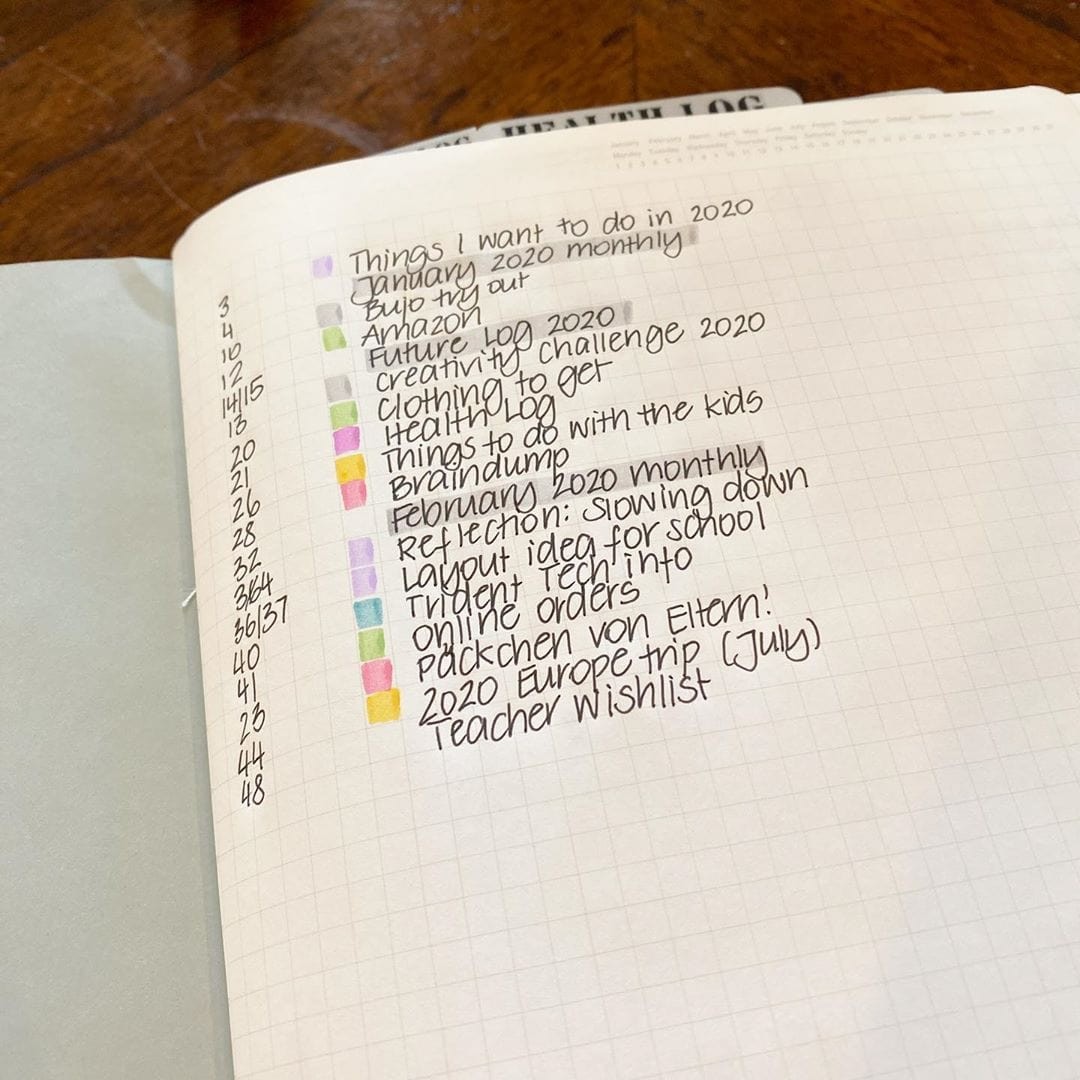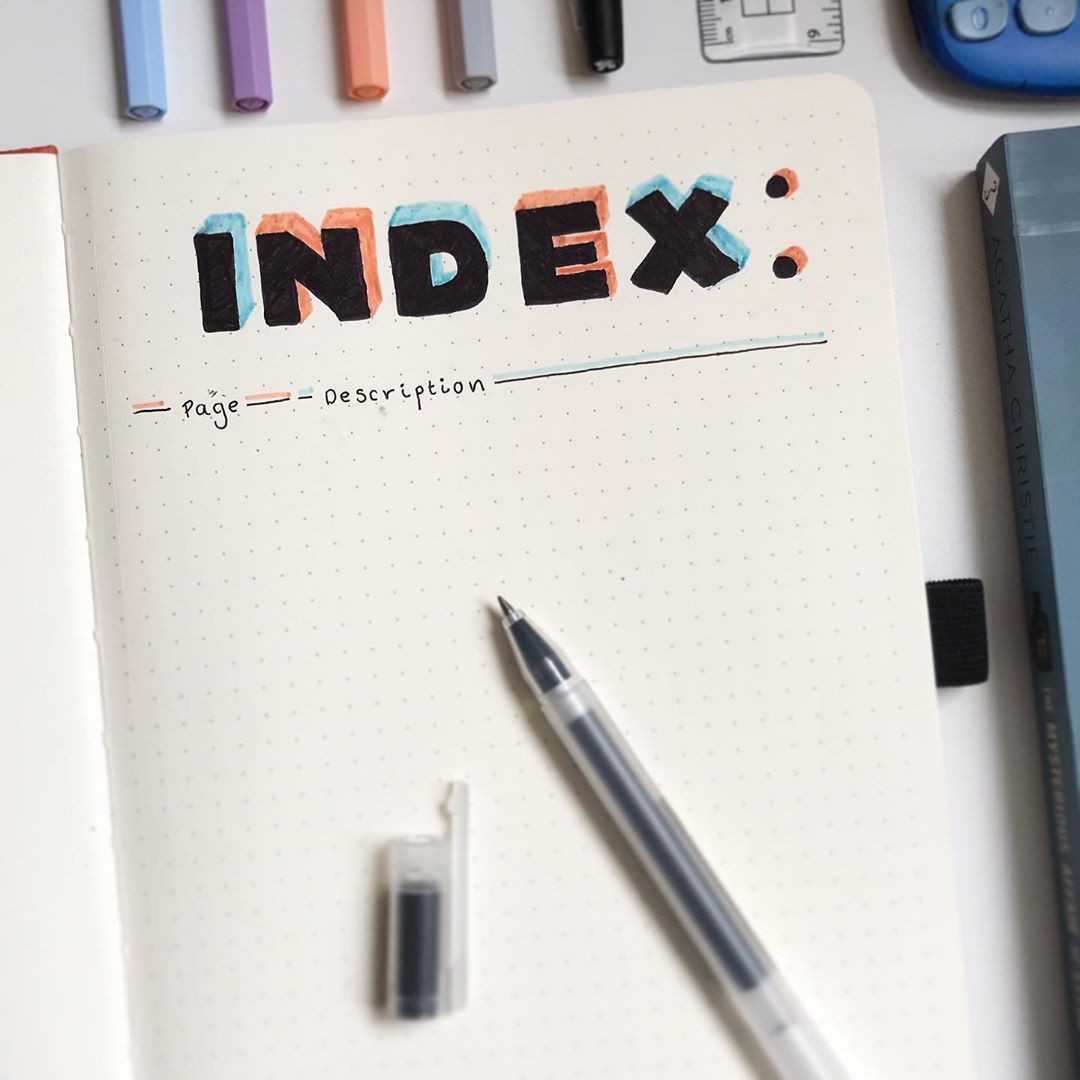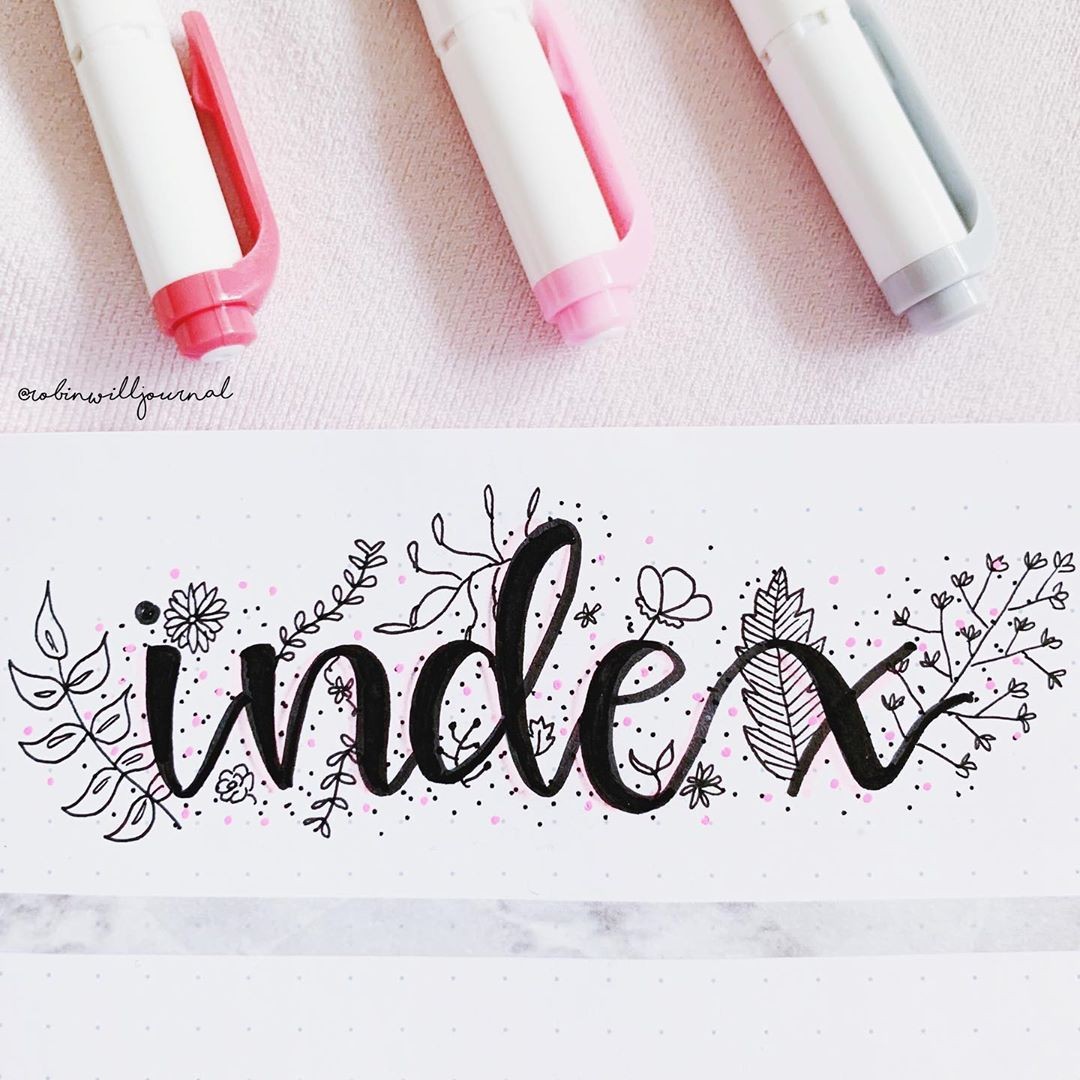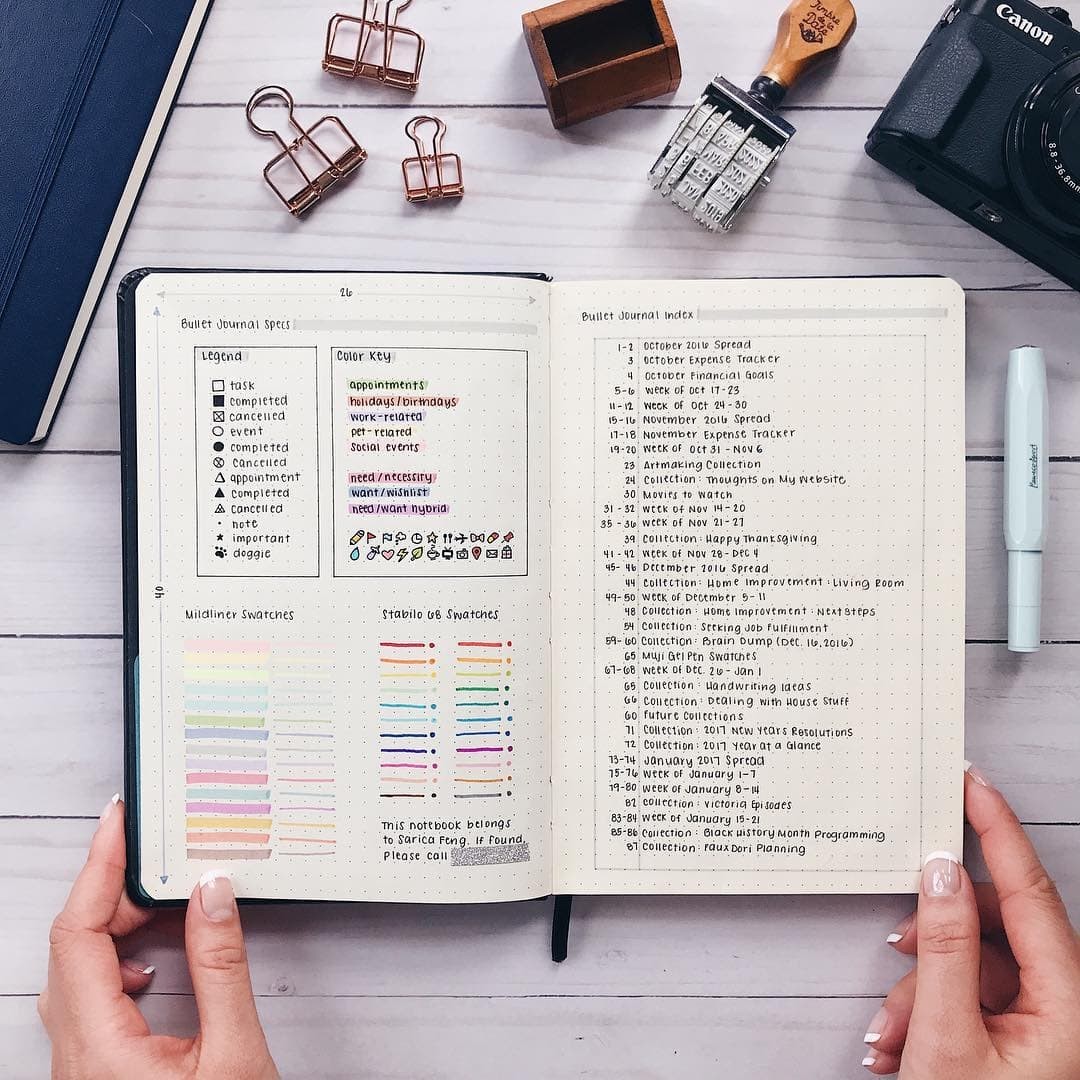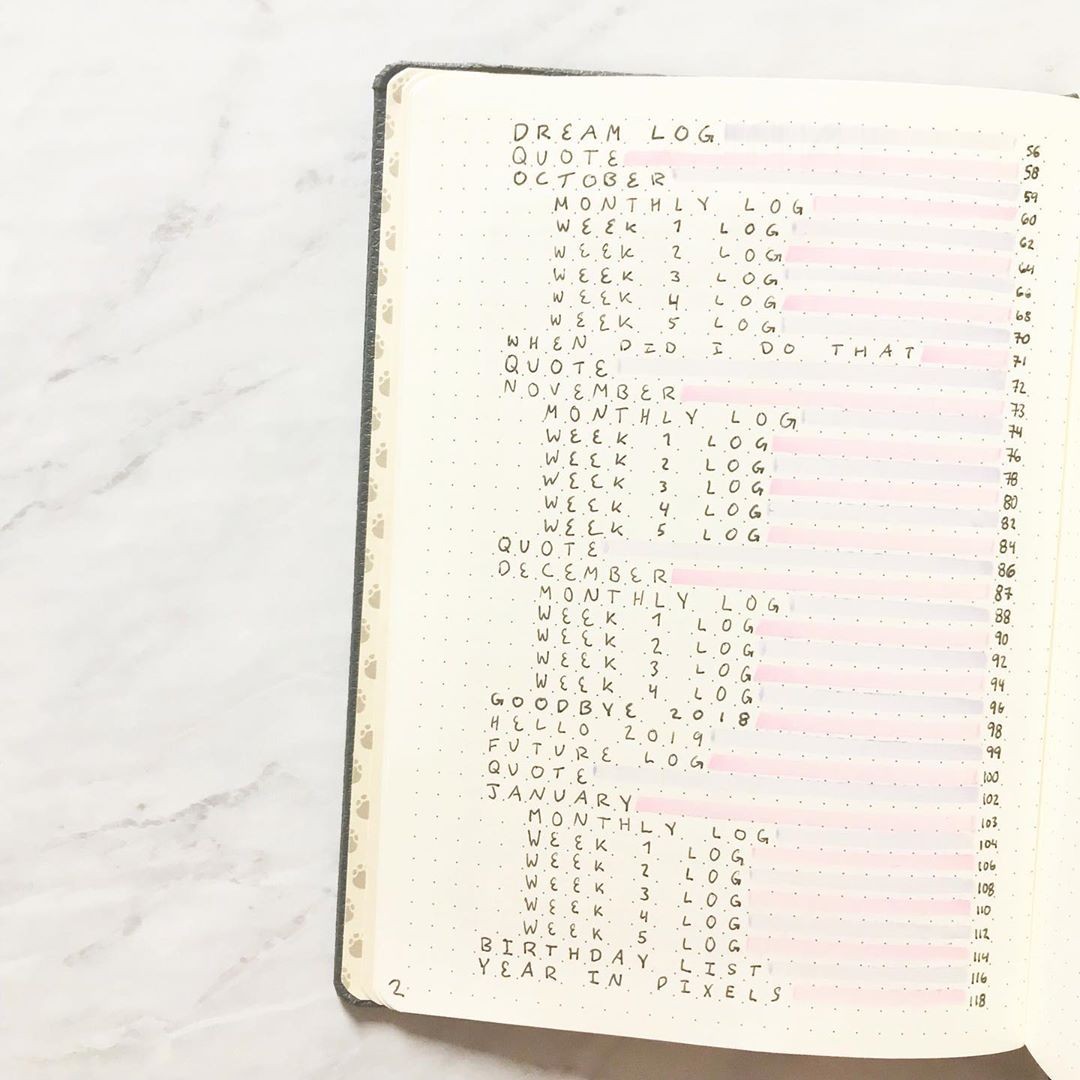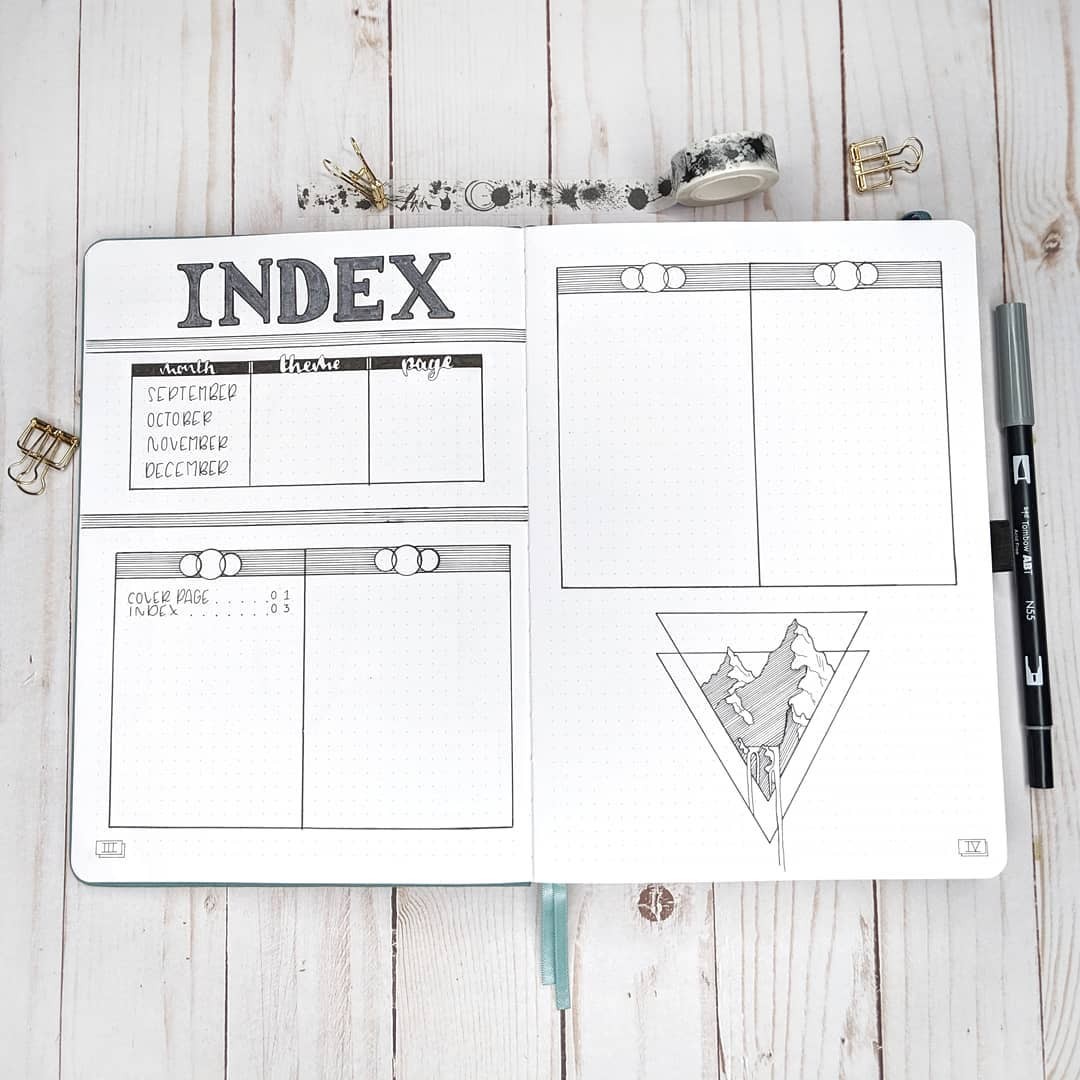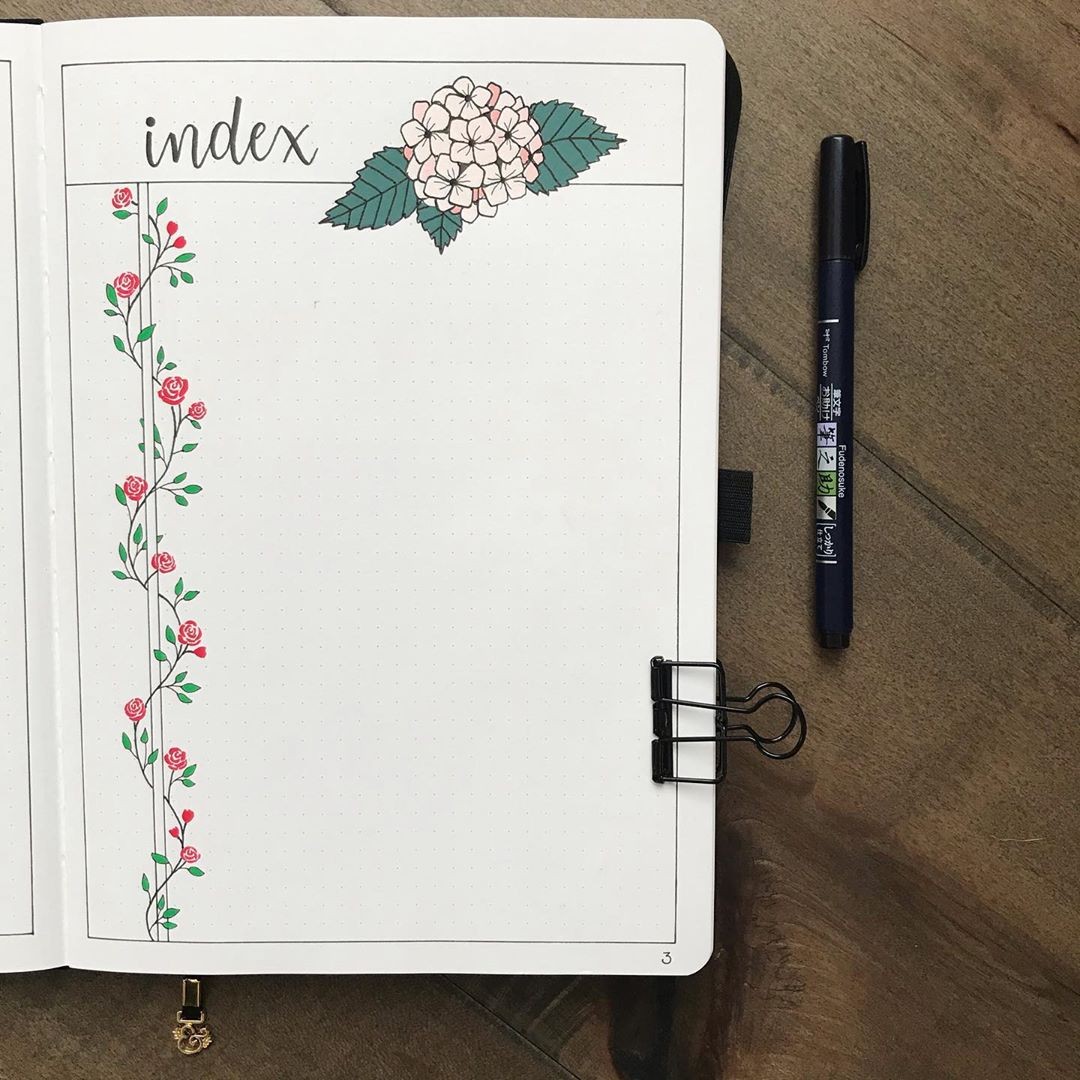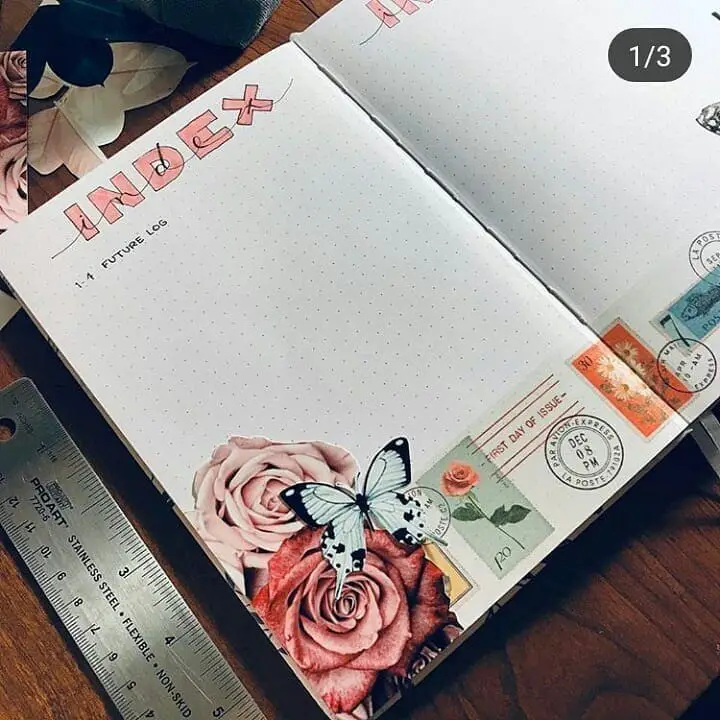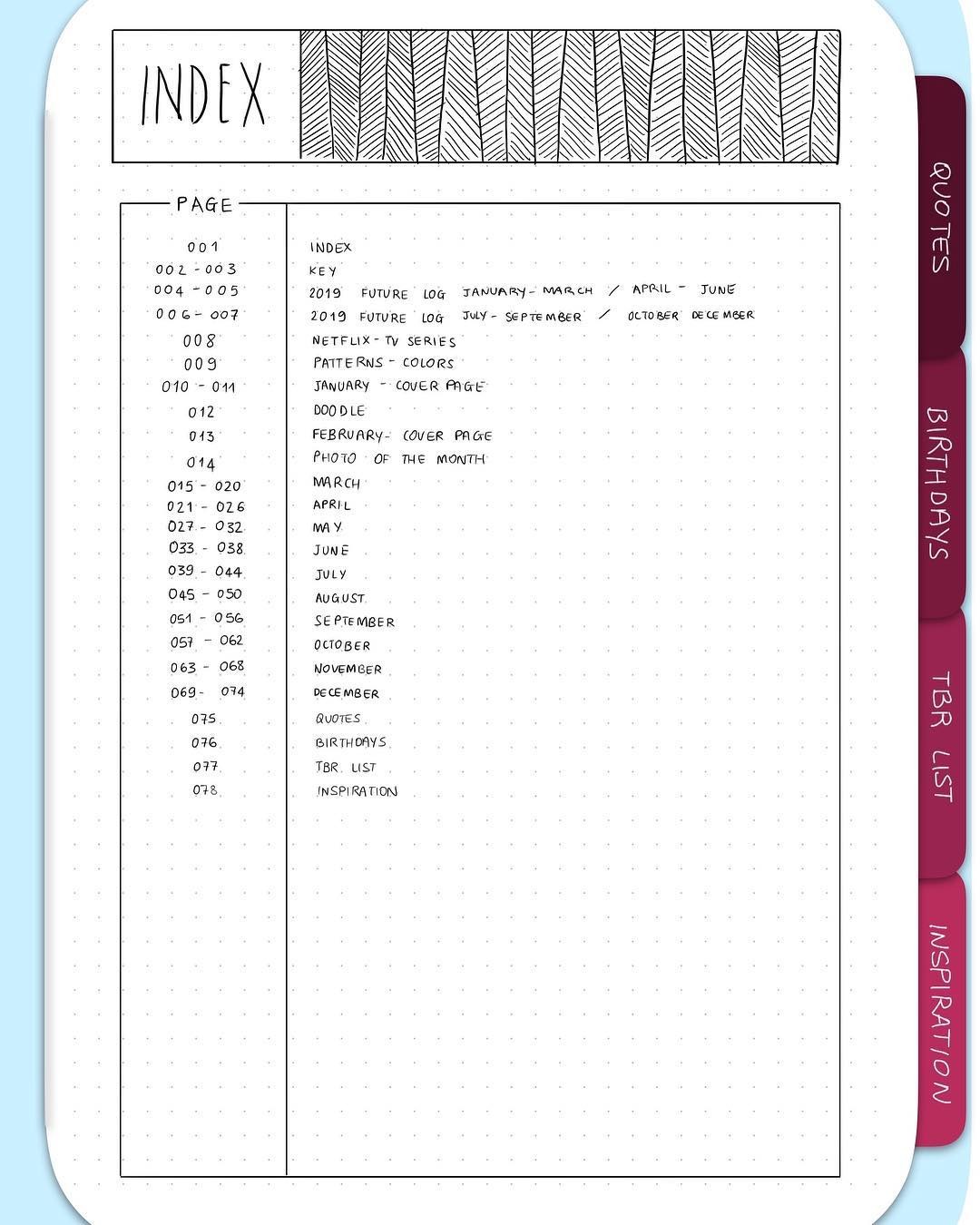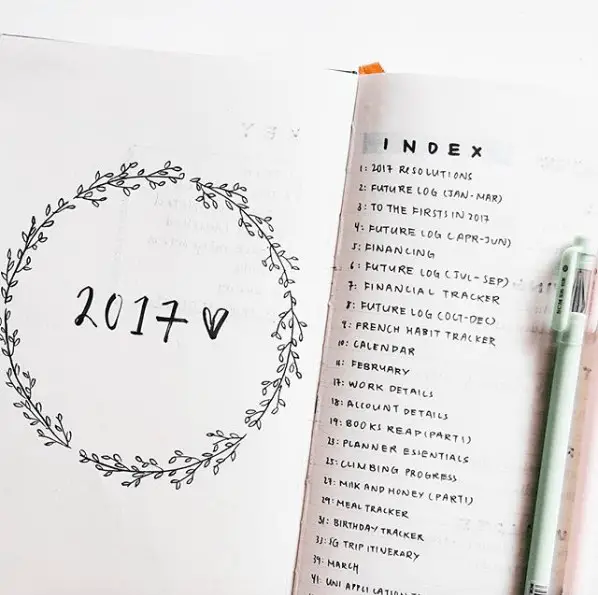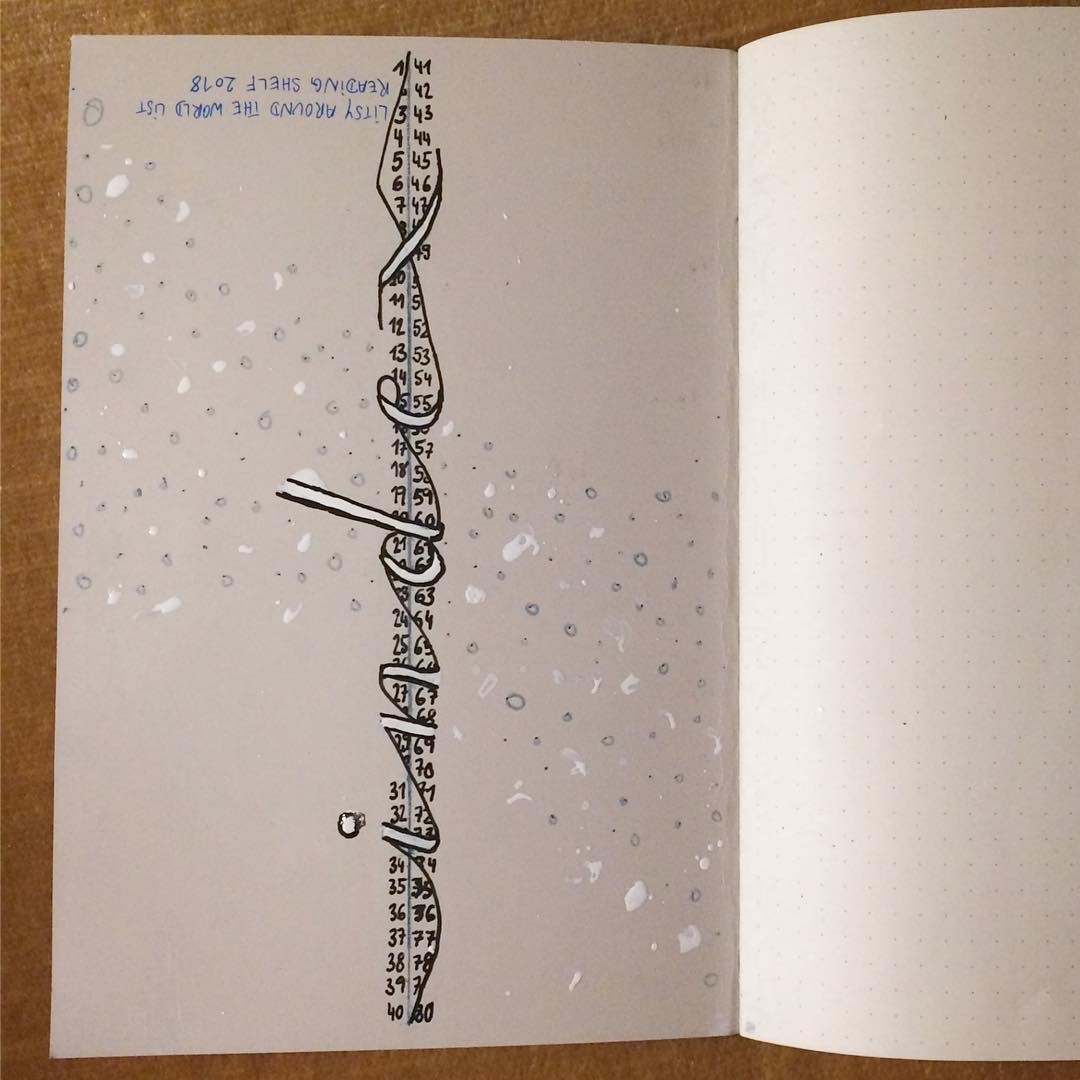Tips on regularly updating your Bullet Journal Index
To successfully maintain a bullet journal index, follow these straightforward tips for beginners. Start by dedicating the first page of your journal after the index to create a personalized key for your unique bullet journal system.
Log monthly collections and logs in your index to keep track of progress.
You don’t have to update your journal with daily records, but it’s crucial to update your index each time you create a new collection.
As you fill out your journal, maintain a chronological index by logging entries as you write them. This will help you easily locate specific information later on.
When filling in your index, be detailed and specific, rather than general. Instead of writing ‘Online Course,’ for instance, specify the name of the course you took, like ‘Basics of Calligraphy.’
If your index page becomes full, simply move to the next available page or continue the index on the last page of your Bullet Journal.
Lastly, don’t be afraid to express your creativity by decorating your bullet journal index with doodles and illustrations. If you’re interested in learning more about this aspect, I’ve created a step-by-step e-book to help you get started.
Learn To Create 150 DoodlesStep-by-Step
With a diverse range of creative endeavors, our hand-drawn doodles span across various themes, including seasonal motifs, celebrations, culinary delights, floral arrangements, and animal portraits. And for just $10, you can bring these delightful illustrations into your life.
Bujo Index Ideas to Inspire You
With the power of an indexed journaling system, you’ve already taken a significant step towards streamlining your note-taking process. But what’s even more exciting is the freedom to tailor your bullet journal index to reflect your personal style and preferences. The possibilities are truly endless, as you can experiment with various formats, designs, layouts, colors, and styles to create something that perfectly suits your creative expression.
The Traditional Bullet Journal Index
When it comes to creating an index for your bullet journal, there are many different approaches to take. However, if you’re looking for a tried-and-true method, I highly recommend emulating the style of traditional journals like Kalyn Brooke’s. The idea is simple yet effective: create a layout for each month or week that showcases the entries you’ve added to your Bujo during that time frame. As new pages are created, be sure to update your index accordingly. This approach not only helps you keep track of what’s happened and what goals have been achieved, but also provides a quick glance at your progress over time.
The Two-Column Index
One creative approach to designing a Bullet Journal Index is to divide the page into two columns, maximizing space efficiency while maintaining organization. This technique can be taken a step further by categorizing each column, allowing for the addition of logs specific to that category. The index layout popularized by bulletjournalnoob serves as a great example, providing a uniform and visually appealing way to organize your Bullet Journal Index.
The Detailed Bujo Index
For those who crave organization, the Bujo’s index can be a treasure trove of information. To unlock its secrets, try this simple yet effective approach: list each page number on your main index page and jot down brief descriptions or keywords that summarize what each page contains. This technique allows for seamless updating of the Bullet Journal Index while providing an at-a-glance overview of its contents.
The Color-Coded Index Idea
When creating a Bujo index, one common concern is the need for numbered pages. But what if your journal doesn’t have numbered pages? Fortunately, plannerjules has a creative solution to this problem. Instead of numbering each page, you can use color-coding to organize and identify different sections. Simply assign a unique color to each section and list the corresponding color in the index. This approach eliminates the need for manual page numbering and adds a visually appealing pop of color to your journal. If desired, you can still include specific page numbers alongside the colored indicators, providing an added layer of organization.
The Monthly Bullet Journal Index
As a beginner, one effective approach is to group your Bullet Journal entries by month and create an index in tandem. This simple strategy allows for creative freedom with font sizes and styles used for headings, while also eliminating the need for page numbering if you’re not using a numbered journal. The monthly categories serve as a convenient navigational tool within your BuJo, streamlining the process of finding specific entries.
The Basic Bujo Index
While creating an index page may seem like a daunting task, especially considering the amount of effort required to set it up, there’s a simpler way to get started. The ‘Simple Index by Tina Stepanova’ is an easy-to-use tool that enables you to create an index in no time at all. To use it, simply list down your daily writings along with their corresponding page numbers (you won’t need to worry about organizing them into categories like monthly or weekly). You’re free to customize the design of your index to fit your personal style or keep things simple by using a basic layout like the one shown above for a clean and organized look.
The Color-Pop Index
To revamp the index page, consider adding a touch of creativity by writing ‘Index’ in a bold font that stands out from the rest of the page. Introduce a pop of color to make the page more visually appealing. I’m particularly fond of the color scheme used by bujo.and.me, which adds a delightful twist to the classic black and white theme. You can experiment with your favorite colors to give your Bullet Journal Index a personalized touch and make it truly unique.
The Highlighted Bullet Journal Index
Adding a creative twist to your index page, bujos.inspirations’ idea suggests using highlighters to bring out unique visual effects. The simple yet effective technique allows you to mark the start of a new month or emphasize specific entries that hold significance for you. Furthermore, you can utilize highlighters as a tool for categorizing pages, injecting a touch of personality into your digital space.
The Calligraphy Index Idea
Adding a dash of personality to your Bullet Journal index is as easy as selecting the perfect font. With countless styles to choose from, both existing and custom-made, you can infuse your headings and logs with an extra layer of whimsy. To further personalize your journaling experience, consider matching the font style to the theme of your book. For inspiration, explore our comprehensive guide on unique Bullet Journal fonts that will elevate your bujo pages.
The Elaborate Bujo Index
The innovative approach by saricastudio offers a unique way to craft a personalized index that reflects your individual style. This Bujo Index can be tailored to suit your preferences using various visual elements such as small boxes, color-coded categories, tiny doodles, or icons. While the level of detail is entirely up to you – it could span two to three pages – it’s essential to maintain a balance between creativity and readability.
The All-In-One Index
When designing an index for your bullet journal, incorporating multiple timeframes can be incredibly effective. A hybrid approach that combines yearly, monthly, and weekly categorizations allows for detailed tracking and organization. To create this type of index, start by dividing your entries into yearly headings, followed by monthly subheadings, and then further break down each month into weekly sub-subheadings. This structured system enables you to regularly monitor and reflect on short periods of time with a high level of detail.
The Tabular Bullet Journal Index
When it comes to organizing your index, a clever approach is to divide it into bite-sized sections and employ tiny tables. This method, which we’ll explore further, offers a visually appealing way to maintain uniformity throughout. By creating separate columned tables for main headings like months or years, as well as others for individual entries, you can establish a clear overview of your journal’s contents (thanks to the headings table) and then delve into more detail in subsequent tables. To add a touch of personality, feel free to experiment with different colors or table styles, tailoring the design to your personal preferences.
The Artsy Journal Index
Transform the opening pages of your Bullet Journal into a vibrant canvas that showcases your creativity. Unleash your artistic side by drawing floral prints, colorful designs, doodles, or theme-related patterns. You can use a range of techniques like sketching, painting, coloring, or outlining to bring your designs to life. As you fill these pages with your unique creations, you’ll be amazed at how it instantly brightens up your day and boosts your mood by reminding you of the creative possibilities that await you every morning.
The Cut and Paste Index
Transforming your Bullet Journal doesn’t have to mean unleashing your inner artist. Instead, repurpose the creativity of others by incorporating cut-out images or collages into your journal’s index pages. Simply find visual elements that spark inspiration or align with your Bujo style and adhere them to your pages using a variety of techniques. You can arrange them in a collage, use them as borders, scatter them randomly across the page, or get creative with their placement. This hack is not only easy but also quick, allowing you to add a dash of personality and visual interest to your journal without needing to draw a single stroke.
The Digital Bujo Index
One of the most exciting aspects of Bullet Journaling is the flexibility it offers. Not only can you create a hybrid system that combines traditional handwritten entries with digital elements, but you can also mix and match physical and digital index pages to suit your preferences. For instance, you might prefer a handwritten journal for daily entries, but opt for a digital index page to keep track of your notes and tasks. The good news is that there are plenty of online resources and templates available to help you create the perfect digital index page. You can customize the style, colors, and fonts to match your personal taste, and then either add it to your digital journal or print it out for inclusion in your handmade Bullet Journal.
The Section-Oriented Index
Instead of having a single comprehensive index, consider creating separate indexes for each category or milestone in your bullet journal. Start by dedicating a page to each new category, such as a monthly, quarterly, or yearly index. For instance, you might create an index for January, another for July, and so on. This approach not only adds visual separation between sections but also provides a concise overview of the upcoming entries in that particular category.
The Mix & Match Bullet Journal Index
One of the most creative Index ideas comes from nowherepaperco, where a black and white design combines calligraphic font written vertically with serial numbers to create a unique touch. This visually appealing index not only enhances its overall appeal but also cleverly splits the page into two columns, providing ample space for logging your index entries. The result is an organized yet creative reflection of your journaling experience.
As the backbone of your journal, it’s essential to give your Index the same level of effort and thought as the rest of your Bullet Journal. We hope these ideas have inspired you to create a personalized Index that not only organizes your bujo but also adds a touch of uniqueness and creativity. Remember, your Index should be a reflection of yourself, created to inspire and motivate you.
If you’ve enjoyed these ideas, feel free to pin the image below and save this article on your ‘Bullet Journalling’ Pinterest board for future reference.


